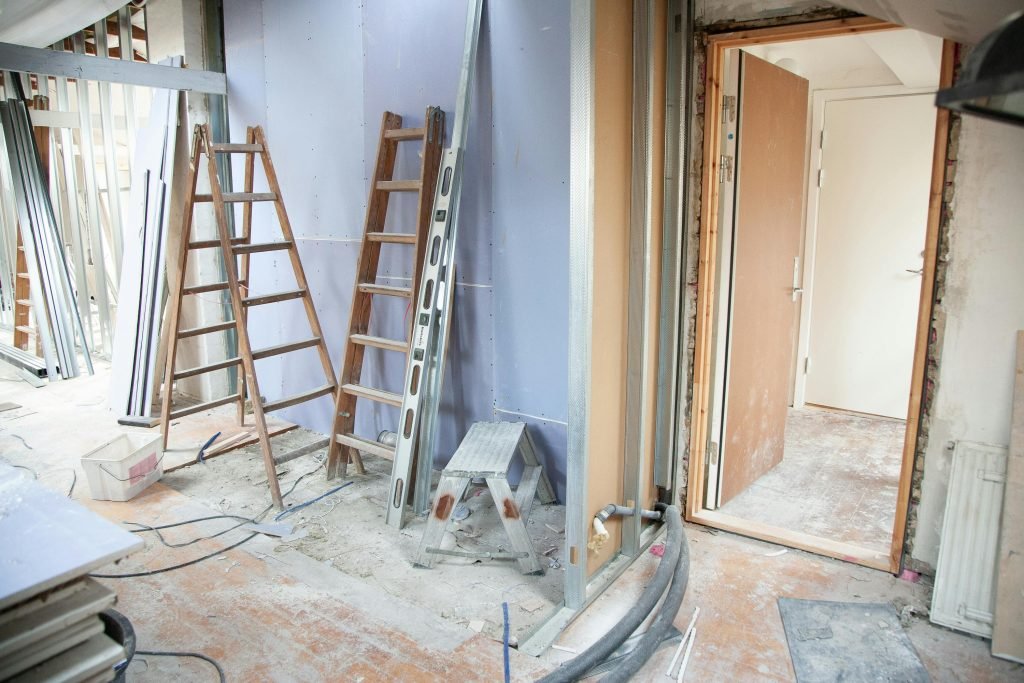Have you ever wondered how you can maintain a comfortable temperature in your home while keeping your energy bills in check? Insulation plays a crucial role in regulating your indoor climate. Not only does it keep your home warm during the winter months, but it also keeps it cool in the scorching summer heat.

This image is property of images.pexels.com.
Understanding Insulation
Insulation is a material that slows down the transfer of heat, helping to maintain a stable temperature in your living space. The effectiveness of insulation is usually measured by its R-value, which indicates how well it resists heat flow. Higher R-values mean better insulation.
When considering ways to insulate your home, it’s essential to think about the areas that need the most attention. Not every part of your house will require the same level of insulation, so knowing where to start can save you both time and money.
Common Insulation Materials
There are several materials available for insulation, and each has its benefits. Let’s break down some common types:
| Insulation Material | R-value per inch | Pros | Cons |
|---|---|---|---|
| Fiberglass | 2.9 – 4.3 | Non-combustible, no settling, inexpensive | Irritation exposure, requires protective gear during installation |
| Foam Board | 3.6 – 6.5 | Moisture resistant, high R-value | More expensive, requires careful cutting for fitting |
| Cellulose | 3.1 – 3.8 | Eco-friendly, good for retrofits | Can settle over time, potential for moisture issues |
| Spray Foam | 3.6 – 6.5 | Excellent air barrier, expands to fill gaps | More costly, requires professional installation |
Understanding these materials helps you make informed decisions about which type suits your home best.
Types of Insulation
There are numerous methods for insulation tailored to your home’s architecture and needs. Here’s a closer look at some of the best options.
Batt and Roll Insulation
Batt and roll insulation comes in pre-cut panels or rolls, commonly made of fiberglass. You may find it relatively easy to install yourself if you have access to the right tools and a little DIY spirit. This type is effective for walls and roofs, providing a good barrier against heat transfer.
Blown-In Insulation
Blown-in insulation is typically made of cellulose or fiberglass and is an appealing option for filling irregular spaces. This method requires specialized equipment, but it’s highly effective for attics or existing walls due to its ability to fill gaps thoroughly. You might want to consider hiring a professional for this installation to ensure it meets performance standards.
Spray Foam Insulation
If you’re looking for versatility, spray foam insulation might be your friend. It expands upon application, sealing air leaks while providing excellent thermal resistance. It’s particularly effective in hard-to-reach areas or irregular spaces. While installation can be more expensive compared to traditional materials, you might save money on heating and cooling in the long run.
Rigid Foam Board
In places where space is limited, like under siding or basement walls, rigid foam board insulation could be the ideal choice. It’s lightweight, easy to handle, and can provide significant insulating power. When installed correctly, you will notice significant temperature consistency in your home.

This image is property of images.pexels.com.
Choosing the Right Areas to Insulate
Not all areas of your home require the same level of insulation. It’s essential to target the right spots for the best results.
Attic Insulation
Your attic is one of the most critical areas to insulate. Since heat rises, a poorly insulated attic can lead to significant heat loss in the colder months and unwanted heat gain in the summer. Ensuring that you have adequate insulation here can dramatically affect your home’s energy efficiency.
Walls
Exterior walls should be insulated to prevent heat loss during winter and to keep the cool air in during summer. This insulation is often overlooked, but sealing even holes or cracks can make a difference. Depending on whether your walls are framed or masonry, your approach may vary.
Floors
If you live in a colder climate and have an unheated crawl space, insulating the floors can help maintain warmth throughout your home. Likewise, insulating basement walls can keep out cold drafts and moisture.
Windows and Doors
While not exactly insulation in the traditional sense, windows and doors are critical barriers against heat loss. Adding weatherstripping or storm windows can significantly improve their insulation capabilities, helping you stay comfortable without cranking up the heater or air conditioner.
Ductwork
Don’t overlook your ductwork! Insulating ducts, especially those located in unconditioned spaces like attics or crawl spaces, can help prevent energy losses as air moves through them. This protective layer can enhance overall efficiency, keeping the temperature in the rooms consistent.
DIY vs. Professional Installation
You might ask yourself whether to take on insulation projects as a DIY task or call in a professional. Here’s a quick breakdown to help you decide:
DIY Insulation
Doing it yourself can be a rewarding experience, especially if you enjoy home improvement projects. You can save money on labor costs by tackling smaller jobs like adding batt insulation in the attic or sealing windows yourself. However, always remember safety first! Protective gear is essential, especially when handling fiberglass.
Professional Insulation
When considering larger projects, such as blown-in insulation or spray foam, hiring a professional may be the best route. With their expertise, they can ensure that the installation meets local building codes and achieve maximum efficiency. This option may cost more initially, but it could yield long-term energy savings.

This image is property of images.pexels.com.
Cost Considerations
When planning your insulation project, it’s vital to consider the costs associated with materials and installation. Prices will vary significantly depending on the insulation type, the area being insulated, and whether you choose to go the DIY route or hire a professional.
Material Costs
Material prices can range widely. For instance:
- Fiberglass batts: Generally cost-effective, hovering around $0.50 – $0.90 per square foot.
- Spray foam insulation: Tends to be on the higher end, costing about $1.00 – $3.00 per square foot, depending on the type.
- Blown-in cellulose: While eco-friendly, it may cost between $0.75 – $2.00 per square foot.
Installation Costs
Installation costs can also vary widely based on project complexity. For example, hiring a professional can add anywhere from $0.50 – $2.00 per square foot on top of the material costs.
Return on Investment
While the upfront costs may seem daunting, think of insulation as an investment rather than just an expense. Improved energy efficiency can reduce your utility bills, potentially returning your initial investment over time. Many homeowners find that their energy savings can cover the cost of insulation within a few years.
Benefits of Proper Insulation
You might be wondering what the advantages of investing in insulation are. Here are some of the key benefits that you could experience:
Energy Efficiency
Adequate insulation keeps your home comfortable while significantly reducing your energy consumption. You won’t have to rely as heavily on heating and cooling systems, which can lead to lower energy costs.
Enhanced Comfort
Proper insulation helps maintain a consistent temperature throughout your home, eliminating hot and cold spots. Is there anything better than a stable and comfortable atmosphere in any season?
Noise Reduction
Alongside thermal benefits, insulation can help minimize noise pollution. This capability is particularly beneficial if you live in a noisy neighborhood or near schools. Insulation materials can dampen sounds, creating a tranquil living environment.
Environmental Impact
By reducing your energy consumption, efficient insulation helps lower greenhouse gas emissions. You can feel good knowing that you’re contributing to a healthier planet!
Increased Home Value
Upgraded insulation can also increase your home’s value. Potential buyers look for energy-efficient homes, and optimized insulation can be a major selling point.
Maintenance and Monitoring
Once your insulation is installed, it’s a good idea to keep an eye on it to ensure it’s performing optimally. Over time, insulation can settle, and wear and tear can occur.
Regular Checks
Inspect your insulation periodically, especially in areas prone to moisture or pests. Look for signs of mold, friction, or damage caused by pets or rodents. Address any issues promptly to maintain effectiveness.
Upgrades
You might also consider periodic upgrades, especially if your home is older. New materials and technology can offer better insulation than what may originally have been installed.
Summary
Insulating your home is one of the most effective ways to improve comfort while managing energy costs. From choosing the right materials to targeting specific areas, every step counts in creating a cozy environment. Understanding your options and knowing when to call in professionals can make the process smoother.
Whether you opt for DIY projects or hire experts, the benefits are clear. Enhanced energy efficiency, improved comfort, reduced noise, and a positive environmental impact are all within reach. So, why not start today? Take the first step towards insulating your home, and enjoy the many rewards that follow!




